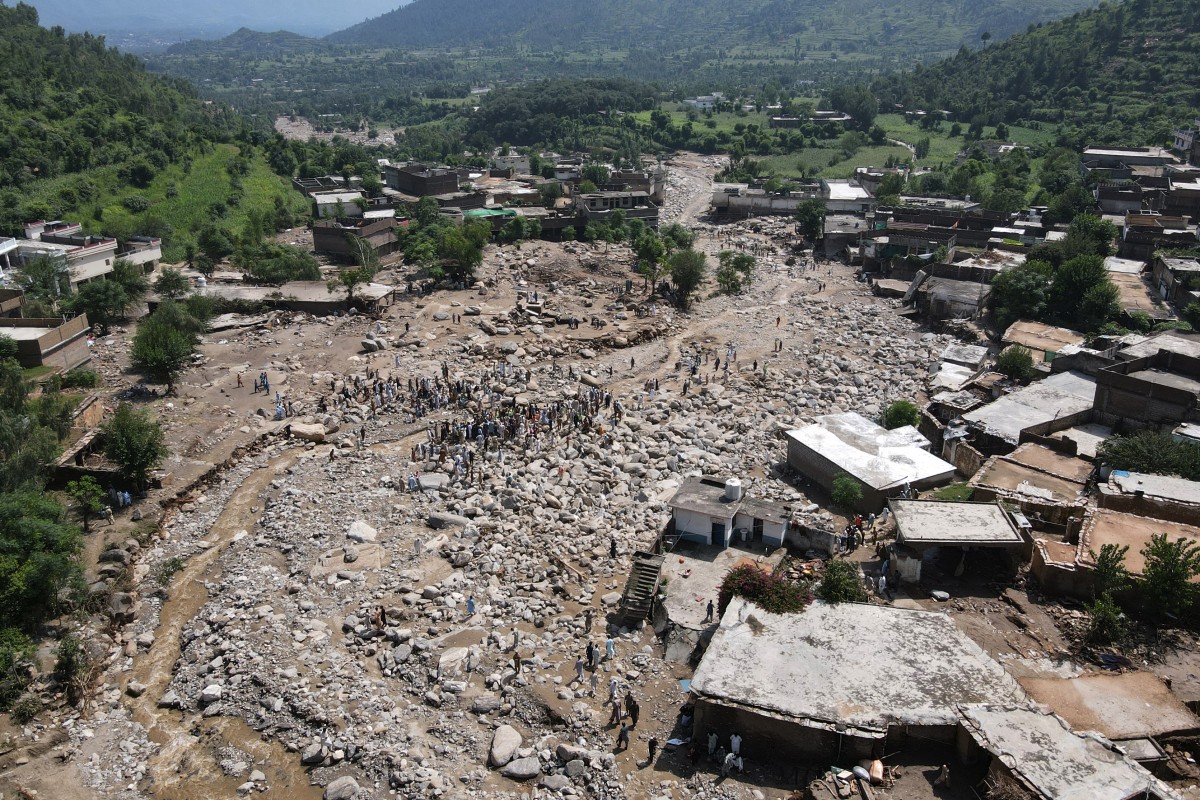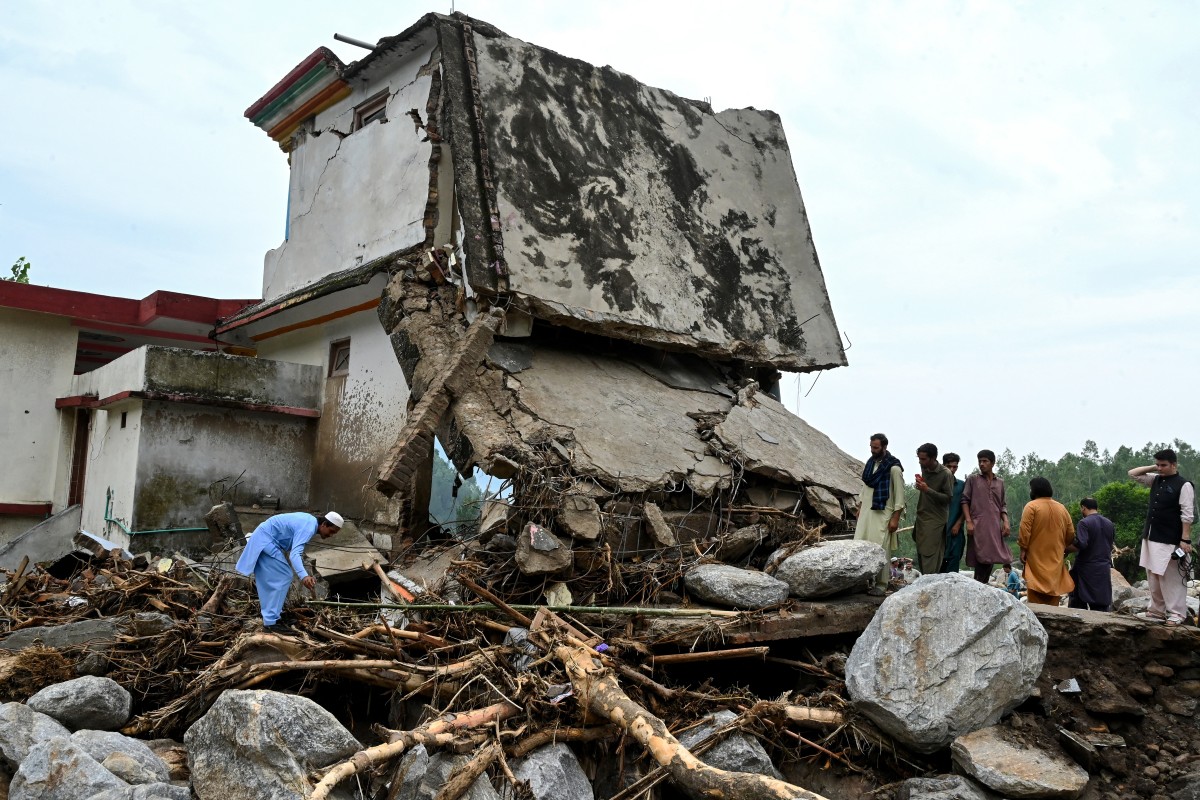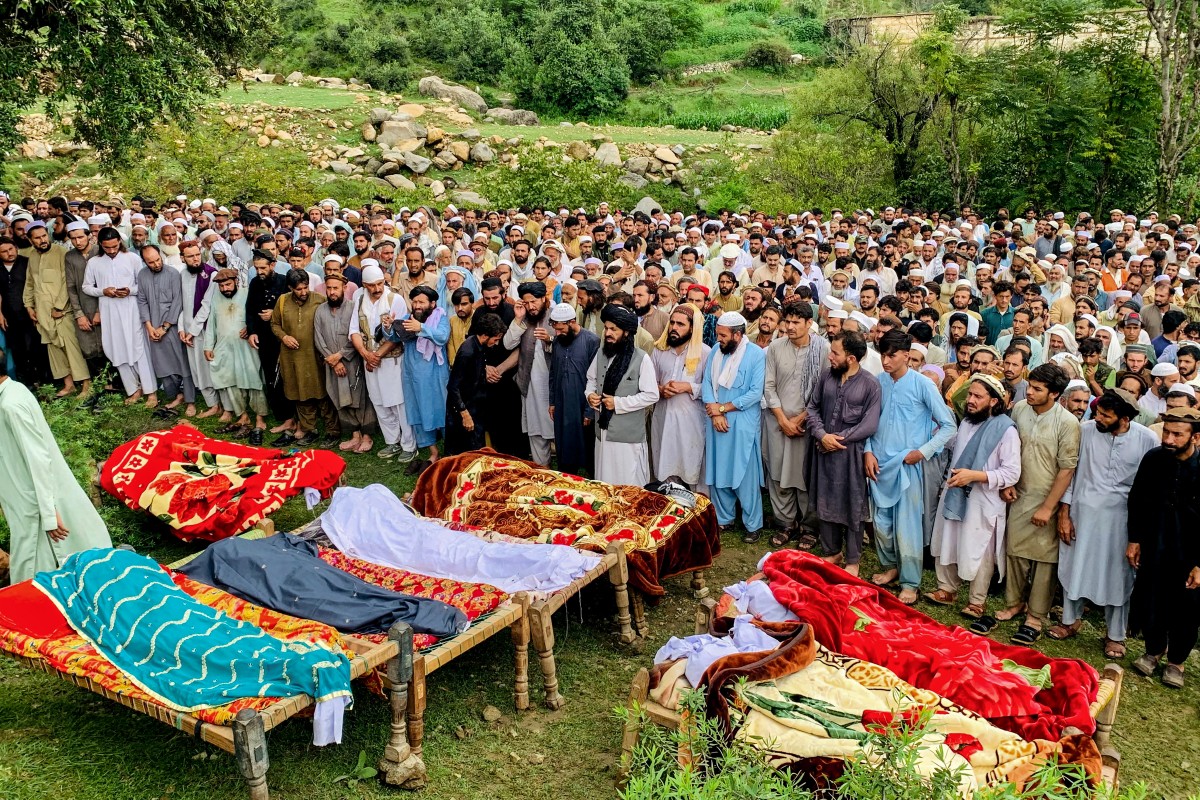
By Agence France-Presse
Pakistani rescuers dug homes out from under massive boulders on Sunday, as they searched for survivors of flash floods that killed at least 344 people, with more than 150 still missing.
Torrential rains across the country since Thursday have caused flooding, rising waters, and landslides that have swept away entire villages and left many residents trapped in the rubble.
Most of the deaths, 317, were reported in Khyber Pakhtunkhwa province, where monsoon rains that are only expected to intensify in the days ahead drove flooding and landslides that collapsed houses.
“We saw all the houses, buildings, and vehicles being swept away like pieces of wood. We managed to climb up the mountain, and when we looked down, our home was gone,” said Suleman Khan, a schoolteacher in Buner district who lost 25 relatives.
More than 150 people are missing in Buner, where at least 208 people were killed and “10 to 12 entire villages” were partially buried, officials told AFP.
“They could be trapped under the rubble of their homes or swept away by floodwaters,” said Asfandyar Khattak, head of Khyber Pakhtunkhwa’s Provincial Disaster Management Authority.
“Separately, in Shangla district, dozens of people are also reported missing,” Khattak added.
The spokesperson for the province’s rescue agency told AFP that around 2,000 rescue workers were involved across nine districts, where rain was still hampering efforts.
“The operation to rescue people trapped under debris is ongoing. The chances of those buried under the debris surviving are very slim,” said Bilal Ahmad Faizi.

AFP journalists in Buner saw half-buried vehicles and belongings lying strewn in the sludge, with mud covering houses and shops. After days without power, the electricity supply was restored on Sunday afternoon.
A grave digger, Qaiser Ali Shah, told AFP he dug 29 burial places in the last two days.
“I have also dug six graves for children. With each grave, it felt as though I was digging it for my own child. For the first time, my body simply refused to carry me through. That’s why today, I apologized, and said I cannot do this work anymore,” he told AFP.
Flooded roads hampered the movement of rescue vehicles, as a few villagers worked to cut fallen trees to clear the way after the water receded.
“Our belongings are scattered, ruined and are in bad shape. The shops have been destroyed along with everything else. Even the little money people had has been washed away,” shopkeeper Noor Muhammad told AFP as he used a shovel to remove mud.
The provincial government has declared the severely affected mountainous districts of Buner, Bajaur, Swat, Shangla, Mansehra and Battagram as disaster-hit areas.
“Every house in our area has been destroyed. Our loved ones are still buried under the mud, stones, and collapsed houses. We appeal to the government to please send machinery to us,” said Buner resident Bakht Rawan.

Mass funerals
On Saturday, hundreds gathered for mass funerals, where bodies wrapped in blood-stained white shawls were laid out on the village ground.
Fallen trees and straw debris were scattered across nearby fields, while residents shoveled mud out of their homes.
Pakistan’s meteorological department has forecast “torrential rains,” with monsoon activity “likely to intensify” from Sunday onwards.
Iran said it stood ready to provide “any cooperation and assistance aimed at alleviating the suffering” in neighboring Pakistan, while Pope Leo XIV addressed the flooding with prayers “for all those who suffer because of this calamity.”
The monsoon season brings South Asia about three-quarters of its annual rainfall, vital for agriculture and food security, but also brings destruction.
“The intensity of this year’s monsoon is around 50-60% more than last year. Two to three more monsoon spells are expected until the first weeks of September,” said Lieutenant General Inam Haider, chairperson of the national disaster agency.
Landslides and flash floods are common during the season, which usually begins in June and eases by the end of September.
The torrential rains that have pounded Pakistan since the start of the summer monsoon have killed more than 650 people, with more than 920 injured.
Pakistan is one of the world’s most vulnerable countries to the effects of climate change and is contending with extreme weather events with increasing frequency. Monsoon floods in 2022 submerged a third of the country and killed around 1,700 people.
